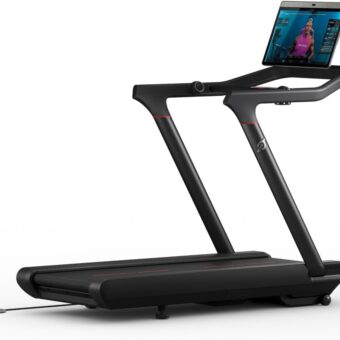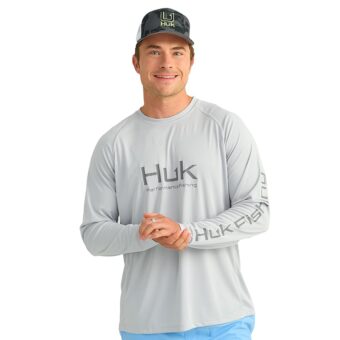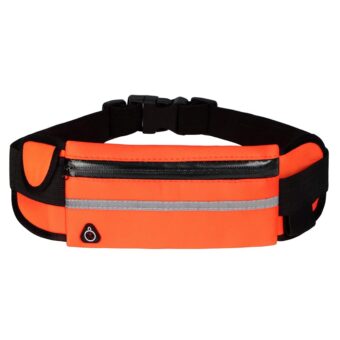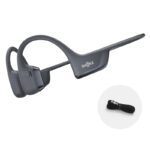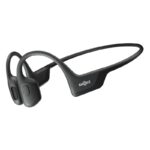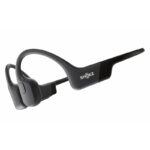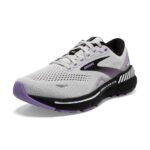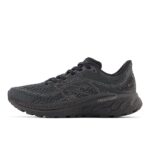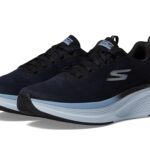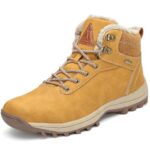When it comes to trail running, the quality and fit of your shoes can make all the difference. The right pair of trail running shoes not only enhances your performance but also keeps you comfortable and protected from the elements. With uneven terrains, slippery surfaces, and unpredictable weather, it’s essential to choose footwear that meets your specific needs. Whether you’re a seasoned athlete or a beginner lacing up for the first time, selecting well-fitted and functional trail running shoes should be at the forefront of your preparation.
But what exactly should you look for in this vital piece of gear? From traction patterns designed for various terrains to cushioning that supports comfort over long distances, understanding key features is crucial. You’ll want to consider lightweight options for speed and agility, as well as waterproof designs if wet conditions are part of your adventure. Plus, if you’re among the many women with wide feet searching for comfortable running shoes, there are tailored solutions available just for you! Dive deeper into our ultimate guide to navigate through everything from the best trail shoes for beginners to affordable options under $100. Your perfect pair awaits!
Understanding Trail Running Shoes
Trail running shoes are specially designed footwear that cater to the unique demands of off-road running. Unlike traditional road running shoes, which prioritize cushioning for paved surfaces, trail running shoes focus on providing stability and protection against the varied and often rugged terrain encountered on trails. With features tailored to grip uneven surfaces, withstand moisture, and offer enhanced support, these shoes allow runners to confidently navigate everything from rocky outcrops to muddy paths.
One of the most significant differences between trail and road running shoes lies in their outsole designs. Trail running shoes typically boast aggressive tread patterns that enhance traction on slippery or uneven ground. For instance, while a road runner might have smooth soles for efficient pavement contact, a trail shoe’s rubber external will feature lugs that dig into dirt and gravel—offering stability during downhill descents or climbs up steep trails. The specific material composition also plays a role; many trail models utilize durable rubber compounds that provide better wear resistance against abrasive surfaces common in wilderness areas.
Additionally, trail running shoes excel in protective features designed specifically for outdoor enthusiasts. They often incorporate rock plates—a thin layer of material placed under the forefoot—that shields your feet from sharp stones and debris. Many also pride themselves on being water-resistant or featuring breathable mesh fabrics to maintain comfort throughout differing weather conditions. This specialized footwear not only accommodates varied terrains but significantly reduces injury risk by offering proper support for ankles and arches during challenging runs.
Ultimately, investing in quality trail running shoes means committing to a greater exploration of nature while minimizing discomfort or injury risks associated with less suitable footwear options. As you transition into more adventurous routes, understanding these distinctions becomes essential—not just for improving performance but also enriching your overall experience as an outdoor enthusiast.
Additionally, trail running shoes often feature enhanced traction through specialized outsole designs that grip uneven surfaces, mud, and loose gravel more effectively than road running shoes. This grip is crucial when navigating steep inclines or descents where slipping can lead to serious falls. Many models also incorporate water-resistant materials to help keep your feet dry in wet conditions while ensuring breathability for comfort during longer runs.
Moreover, the fit of trail running shoes can differ significantly from traditional athletic footwear; they are typically designed with a snugger fit around the heel and midfoot but offer ample room in the toe box. This construction allows for natural foot expansion as it moves over varied terrain without compromising stability—a vital factor during prolonged activity on rugged paths.
When selecting a trail shoe, consider the specific requirements of your favorite trails—such as their surface types and average weather conditions—as well as your personal preferences regarding cushioning and support levels. Take time to try different brands and styles at local specialty stores to find what suits your foot shape best.
In conclusion, embracing quality trail running shoes is about more than just performance; it’s an investment in safety, comfort, enjoyment—and ultimately a more profound connection with nature. As you equip yourself with the right gear tailored for adventure runs ahead, you’ll undoubtedly cultivate both confidence on challenging trails and memories worth cherishing among some of Mother Nature’s most beautiful landscapes. So lace up those specialized kicks and get ready for every exhilarating step along your journey!
Key Features to Look For in Trail Running Shoes
When choosing the perfect pair of trail running shoes, several key features can significantly impact your performance and comfort on the trails. One of the most crucial aspects is traction patterns, which vary greatly depending on the terrain you’ll encounter. Look for shoes with aggressive lug patterns if you’re running on rocky or uneven surfaces; these provide grip and help prevent slips. For muddy trails, wider-spaced lugs can help channel mud away from your shoe, ensuring you maintain traction even in challenging conditions. A specific example would be a shoe that incorporates varying lug depths—this design allows for optimal grip across different terrains, offering versatility no matter where your run takes you.
Cushioning and support are equally important for enhancing comfort during long runs. The right amount of cushioning will absorb impact while still allowing enough ground feel to navigate varied terrains effectively. In selecting trail running footwear, consider options with midsole technologies like EVA foam or gel inserts that balance softness with responsiveness. Brands such as Hoka One One offer models praised for their plush cushioning without sacrificing stability, making them an excellent choice for those seeking comfortable running shoes over extended distances.
In addition to traction and cushioning, breathability and waterproof options play a pivotal role in determining the overall performance of trail running shoes. Breathable mesh uppers keep your feet cool during warm-weather runs while also preventing excessive moisture buildup from sweat—a common concern for many outdoor enthusiasts. Conversely, if you often find yourself navigating damp trails or muddy environments, investing in waterproof trail shoes will protect your feet from getting soggy while maintaining breathability through specialized materials like Gore-Tex. This feature is especially beneficial for runners who prioritize year-round training regardless of conditions.
Ultimately, understanding these key features will empower you to make informed decisions when shopping for trail running footwear. By considering traction patterns suited to your typical run environment, prioritizing adequate cushioning and support for endurance activities, and weighing breathable versus waterproof options based on seasonal needs, you’ll be better equipped to find the best trail shoes tailored specifically to your unique preferences and requirements as an athlete or outdoor enthusiast.
Additionally, it’s important to pay attention to the shoe’s fit and sizing. A snug yet comfortable fit can greatly enhance your performance and reduce the risk of blisters or other injuries during long runs. Trying on different brands and models is crucial since each manufacturer can have slight variations in sizing.
Another aspect to consider is the weight of the shoes. Lighter options may improve speed but could compromise support or durability, especially on rugged terrains. Conversely, heavier shoes might provide more protection but feel cumbersome over long distances. Finding a balance between weight and features that suit your running style will lead to a more enjoyable experience.
Moreover, examining user reviews and seeking recommendations from fellow trail runners can give valuable insights into how specific shoes perform under various conditions. Real-world feedback often highlights potential issues that you might not notice until you’ve logged several miles in them.
Finally, don’t overlook the importance of ongoing maintenance for your trail running footwear. Regular cleaning after muddy runs and periodic inspections for wear can prolong their lifespan significantly—allowing you to maximize your investment while enjoying countless adventures on trails.
By taking these considerations into account alongside key shoe features like traction, cushioning, breathability/water resistance, fit/size, weight balance, reviews/recommendations, and maintenance tips—you’ll be well-prepared not only when shopping for new gear but also when embarking on exciting new challenges! Whether you’re racing through competitive courses or exploring serene trails at a leisurely pace—the right pair of trail running shoes will play an essential role in enhancing every step of your journey into nature’s embrace!
Types of Trail Running Shoes
When it comes to trail running shoes, there are several categories tailored to meet various needs and preferences. One popular type is lightweight trail runners. These shoes are designed for speed and agility, making them ideal for racers and those who prioritize quick movements across the terrain. The advantages of lightweight trail running shoes include a breathable upper, reduced bulk, and a responsive feel that can improve performance on less technical trails. However, they may lack some cushioning and support compared to their heavier counterparts, which could make them less suitable for long distances or rugged terrains where more protection is necessary.
For runners who frequently encounter wet and muddy conditions, waterproof trail shoes are essential. These shoes feature specialized membranes or coatings that prevent water from seeping inside while still allowing moisture from sweat to escape. This makes them an excellent choice for anyone looking to keep their feet dry in rainy weather or while crossing streams and puddles. Brands like Merrell and Salomon have created highly regarded waterproof models that excel in keeping feet comfortable during prolonged exposure to wet conditions—but be aware that these might not be as breathable as lighter options on warmer days.
Women with wide feet often struggle to find comfortable footwear that accommodates their foot shape without sacrificing performance or style. Fortunately, many brands now offer specialized models specifically designed for women with wider feet—these include Trailtalon 250 by Inov-8 or Hoka’s Torrent series. These options prioritize comfort by providing a more accommodating fit in the toe box while still incorporating essential features found in high-quality trail running shoes such as grip, stability, and cushioning. Such thoughtful designs ensure that all enthusiasts—regardless of foot width—can enjoy the thrill of trail running without discomfort holding them back.
In summary, understanding the different types of trail running shoes available—lightweight options for speed enthusiasts, waterproof designs for challenging weather conditions, and accommodating variants for wider feet—can empower you to make an informed decision based on your specific needs and preferences. By choosing the right category of shoe tailored to your typical running environment, you’ll enhance your overall experience on the trails.
Choosing Trail Running Shoes Based on Terrain
When it comes to trail running, the type of terrain you encounter can significantly influence your choice of footwear. For rocky or uneven surfaces, stability and traction are paramount. The best trail running shoes for this kind of terrain should feature aggressive outsole patterns that grip effectively on jagged rocks and loose gravel. Look for models like the Salomon Speedcross that provide deep lugs designed specifically for navigating challenging terrains. A shoe with rock plates can also offer additional protection against sharp stones, ensuring that your feet stay comfortable while conquering those rugged paths.
On the other hand, if your trails tend to be muddy or slippery, it’s essential to find shoes that excel in wet conditions. Waterproof trail shoes such as the Merrell Moab 2 Waterproof are ideal for keeping your feet dry during those unexpected puddle jumps and stream crossings. They often come equipped with a specialized rubber compound that enhances grip in slick situations. Additionally, consider lightweight trail running shoes with plenty of drainage ports; these allow water to escape quickly once you’re out of the muck, helping you maintain optimal comfort throughout your run.
As you choose trail running shoes tailored for varied running conditions—like transitioning from dry landscapes to damp and muddy routes—look for versatility in features like cushioning and flexibility. An all-terrain shoe combines elements from both rocky and muddy footwear providing a balanced experience across different environments. Brands such as Hoka One One create versatile options designed to perform well regardless of changing surfaces without sacrificing the signature comfort they are known for.
In summary, understanding the specific details of your typical running environment is crucial when selecting trail running shoes. Prioritizing key features tailored to particular terrains will not only enhance performance but also promote safety during outdoor adventures. Whether you’re tackling tough climbs over stony hills or sprinting through soft, soggy trails after a heavy rain shower, choosing the right pair can make a world of difference in your overall experience on the run.
Best Trail Running Shoes for Beginners
Choosing the right trail running shoes can be overwhelming, especially for beginners. Novice runners should look for key features that enhance comfort and confidence on the trails. Adequate cushioning is essential, as it helps reduce fatigue during longer runs while also providing a buffer against rough terrain. Additionally, a secure fit is crucial to prevent slipping inside the shoe and to ensure stability. Look for trail running footwear with a broader toe box—this allows your toes to splay naturally during motion, which can significantly elevate comfort levels.
For those shopping on a budget, there are several fantastic options available under $100 that don’t compromise on quality. Models like the Salomon Speedcross Lite or the Merrell Trail Glove offer solid traction and adequate support without breaking the bank. These shoes are lightweight yet durable enough to handle various terrains, making them ideal choices for anyone just getting acquainted with trail running. Furthermore, brands like ASICS and New Balance frequently release affordable models that cater specifically to beginner trail runners who want reliability without hefty prices.
Transitioning from casual running or walking to more rigorous trail activities requires some adjustment. Start by gradually increasing your time spent on uneven surfaces; this will help build strength in the muscles used in trail running and improve awareness of footing placement. When first venturing out, avoid overly technical terrains—choose smoother paths where you can focus more on developing your form rather than worrying about potential slips or falls. As you gain experience and confidence, you’ll find yourself drawn toward more challenging routes.
Another excellent strategy is participating in local community runs or joining beginner-friendly meetups where others share similar interests. This not only provides motivation but also invaluable insights into equipment preferences and personal experiences with various footwear options. Ultimately, choosing comfortable running shoes tailored for beginners sets you up not only for enjoyable outings but also fosters lasting enthusiasm for your new outdoor pursuit!
Lightweight vs. Heavier Trail Running Footwear
When it comes to trail running shoes, the debate between lightweight and heavier models can significantly impact your experience on the trails. Lightweight trail running shoes are often sought after due to their agility and speed-enhancing qualities. They allow for quick foot movements, making them ideal for runners looking to conquer short, fast-paced trails or racing courses. The minimalist design of these shoes typically features a lower stack height, providing a more ground-sensitive feel that many athletes appreciate. For example, brands like Altra and Saucony offer lightweight options that help you pick up speed without feeling burdened by extra weight.
However, while lightweight shoes excel in speed and responsiveness, there may be moments when opting for more substantial footwear becomes beneficial. Heavier models tend to provide additional cushioning and support, which can be advantageous during long runs or challenging terrains where stability is key. For instance, if you’re tackling rocky trails with unpredictable conditions or embarking on longer journeys that involve carrying a pack, a sturdier shoe with enhanced protection will likely keep your feet safe from potential injuries caused by sharp rocks or uneven surfaces.
Finding the right balance between comfort, weight, and protection ultimately comes down to personal preference and specific running needs. Many trail runners enjoy having a variety of shoes in their arsenal—lightweight pairs for shorter trail sprints and heavier options for rugged adventures or ultra-distances. Additionally, consider factors like terrain type and weather conditions; if you anticipate wet trails or need extra grip on slippery surfaces, selecting a shoe designed with durability in mind might outweigh the benefits of going lighter.
Moreover, it’s essential to pay attention to how each pair performs on your feet during training sessions before making a decision. Everyone’s foot shape is unique; thus trying different types will ensure you find what works best for you in terms of comfort without compromising essential features like traction and cushioning. Embrace experimentation as part of your journey—after all, finding the right blend between lightweight agility and supportive structure could be what elevates your performance to new heights on the trails!
Additionally, consider the terrain you’ll be navigating. Trail running on rocky paths might demand more cushioning and support to protect your feet from impacts, while smoother paths might allow you to opt for a lighter shoe that promotes speed. Pay attention to factors such as grip; underestimating the importance of traction could lead to slips or falls during particularly tricky sections of your run.
Don’t forget about weather conditions either—some shoes offer water-resistant materials or breathability features tailored for different climates. If you’re often faced with muddy trails or wet surfaces, investing in shoes designed for those environments can significantly enhance both safety and comfort.
Finally, remember that no matter how advanced technology becomes in footwear design, the best shoe is always one that feels right for you. Take time to break in new pairs before fully committing them to trail runs; this practice will not only give you insight into their performance but also help prevent blisters and discomfort down the line.
In summary, finding the perfect trail running shoe is a nuanced process influenced by various variables including weight preference, foot shape variations, terrain types, and weather considerations. Prioritize what matters most alongside personal comfort—the right choice can indeed transform each run into an exhilarating experience rather than just another workout!
Trail Running Shoe Fit and Sizing Tips
Finding the right fit for trail running shoes is crucial, especially for individuals with wider feet. Many brands have started to recognize the need for diverse sizes and widths, offering models that cater specifically to women with wide feet or those who generally struggle with traditional standard sizing. It’s essential to know your foot measurements – length and width – and to seek out brands that offer sizing options beyond the typical narrow or regular fits. For example, some popular trail shoe manufacturers utilize a series of D (standard) and 2E (wide) sizing, ensuring that runners can find their best match without compromising on comfort.
When shopping for trail running shoes, never underestimate the power of trying them on before making a purchase. Since different brands might fit differently based on their unique design philosophy, it’s best to visit a local store where you can test several styles. Make sure to wear the same type of socks you plan on using during your runs; this will give you a more accurate feel when assessing the shoe’s fit. Walking around in them also provides insight into whether there are any pressure points or areas that feel overly tight—a common issue when opting for shoes that may not have been designed with all foot shapes in mind.
Consideration should also be given to sock thickness while evaluating your shoe size; thicker socks can create discomfort if your shoes are already snug. If you usually wear cushioned or heavier socks for added warmth or support during colder months on rocky trails, ensure those factors come into play when selecting your footwear. A good rule of thumb is to try on several pairs at once—start by removing insoles from each shoe—and consider how they feel both socked and unsocked during your fitting session. Finding the perfect balance ensures comfort from start to finish while navigating various terrains.
Finally, remember that fit may slightly change after wearing the shoes over time due to stretching and adjustments made by your movement patterns during runs. After purchasing new trail running shoes, it’s vital to pay attention to how they adapt as you run longer distances; drop in cushioning could signal time for replacement sooner than expected! Using these tips will not only enhance your overall experience but help you enjoy every stride along stunning trails ahead!
Caring for Your Trail Running Shoes
Maintaining your trail running shoes is essential for maximizing their lifespan and performance. One of the most effective ways to care for your footwear is through regular cleaning. After each run, especially on muddy or rocky terrain, take a moment to remove any dirt and debris. A soft brush works wonders on the outsole and upper to help dislodge mud, while a damp cloth can wipe down any remaining surfaces. If your shoes are particularly soiled, a gentle wash with mild soap and water will bring them back to life. Just be sure to avoid putting them in the washing machine or dryer as this can damage both the materials and structure of your shoes.
Knowing when to replace your trail running shoes is crucial for both safety and performance. As a general rule of thumb, if you’ve logged around 300 to 500 miles in your shoes, it may be time for a new pair—especially if you notice decreased cushioning or support. Look out for key indicators like worn-out treads or cracks in the material; these signs can compromise traction and lead to injuries on technical trails. Many runners find it helpful to track their mileage using apps that log runs, including shoe wear data, which can simplify the replacement process.
Seasonal maintenance also plays an important role in prolonging the life of your trail running footwear. For instance, if you store your shoes at the end of the season, ensure they are clean and dry before putting them away; this prevents mold growth from moisture buildup. Additionally, rotating between two pairs during peak months can allow one pair to rest while you put miles on another set, reducing overall wear-and-tear in high-demand seasons like spring or fall when trail conditions become more variable. Giving each pair proper care will not only enhance their durability but also provide better performance throughout all types of outdoor adventures.
With these tips in mind, you’ll not only extend the life of your favorite trail running shoes but also enjoy maximum comfort and safety during every run—because what’s better than conquering those trails in reliable footwear?
Choosing the Right Trail Running Shoes
In conclusion, selecting the right trail running shoes is crucial for enhancing your running experience. Consider key factors such as traction, cushioning, fit, and material. These aspects ensure comfort, support, and performance on various terrains. Whether you prefer lightweight trail runners or waterproof options, knowing what to look for can make a significant difference.
Don’t hesitate to experiment with different styles and brands to find the perfect match for your feet. There are fantastic options available for everyone—from trail running shoes for women with wide feet to affordable trail running shoes under $100. Ultimately, investing in quality footwear is essential; it not only improves your run but also helps prevent injuries. Happy trails!

